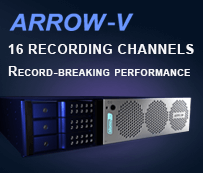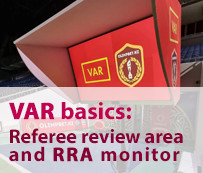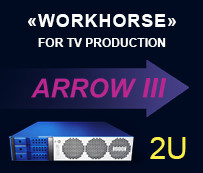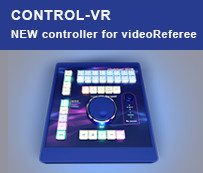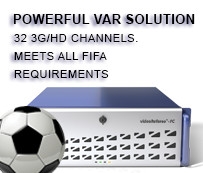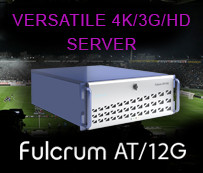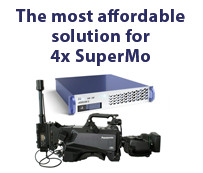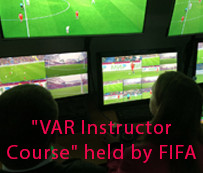4K video
Which is better - 12G or 4x3G SDI?
Our opinion is that the 12G SDI is better, because it requires only one wire for transmission, instead of four. There are two main advantages: first — the probability of problems is reduced by 4 times, the second — you can immediately see whether there is a signal or not.
The only drawback is that a large number of broadcast equipment manufacturers have not mastered this standard and we are waiting for the transition of the entire industry to 12G. As soon as this is done we will immediately switch to 12G SDI in all our servers.
Why do slomo.tv servers use 4x3G SDI video interfaces rather than 12G SDI?
At the moment, the broadcast equipment market has not implemented the 12G standard. And therefore the vast majority of professional 4K cameras, mixers and switchers use for transmission of one 4K 50p/60p signal 4x3G SDI connection. Since we work with existing market, we use the same connections.
Nevertheless, in videoReferee®-4K for working with 4K 50p/60p video signals we use 12G SDI interface. This is done because the most affordable 4K video camera is Blackmagic Micro Studio Camera 4K.
Your servers are working with full frames, while competitors work with four quarters. Why do you do this?
The architecture of our servers allows us to work with full frame resolution. The architecture of competitors does not give them such an opportunity. It is worthwhile to understand that instead of recording 4K full frame they are working with four separate 3G quarters. This approach may have some problems. The main problem arises from the use of adaptive codecs which adjust their properties depending of the incoming image. It can turn out that one part of the image is very different from the other parts and in fact that will lead to different distortions in different quarters. Therefore, the image processed through quarters, will look a little different.
We use the IFRAME DCT based codec, which works with a full 4K frame and avoids such problems.
Another advantage of working with 4K full frame is that the image can be displayed to the user in any scale.
Why do you use ProRes 422 codec in your files for 4K non-linear editing?
The ProRes 422 codec which was not tied to 1920x1080 resolution was originally used by Apple Final Cut and other editors on Macintosh for movie applications. In contrast, for example, to the AVID DNxHD Pro HD or any other broadcast codec, its high resolution is native for 4K.
Two years ago, when we created our 4K servers, ProRes was the only accepted and normally working 4K codec that could be applied. We believe that the quality provided by this codec significantly exceeds the quality of files created by other editors.
How many channels are available for UHD / 4K? Can the available channels be configured in different numbers as input / output or are they fixed?
In 4K the server provides 4REC + 4SEARCH + 2PLAY + FX. The number of input channels can be reduced.
What are the supported codecs for UHD / 4K?
Beside the dedicated DCT Based I frame codec, we use ProRes 422 for export. There is also a hardware option XAVC / AVC Intra.
What is the connection standard for UHD / 4K? (Single link 12G / Quad Link?)
We use 12G-SDI.
Is there a need to change the hardware in order for the device to work in UHD / 4K or is it provided by software / license?
This option is a s/w license and can be installed remotely at any time.



